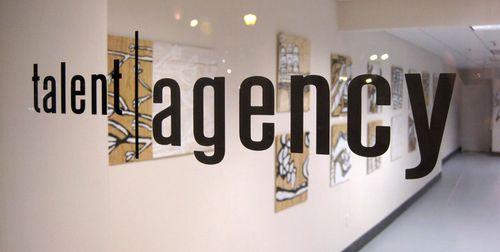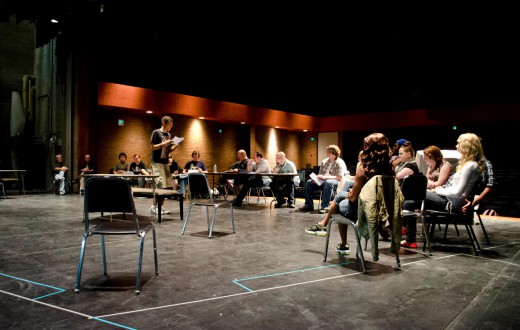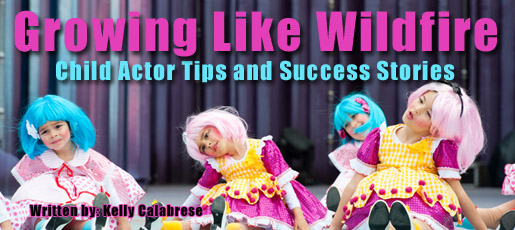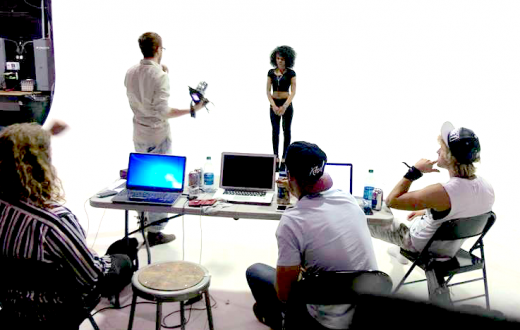As awards season heats up and the Oscar nominations are grabbing entertainment headlines, one actor’s heartfelt, tortured performance in particular is the subject of much water cooler talk: of course that is Joaquin Phoenix for his brilliant turn as Arthur Fleck, aka Joker. (Spoilers ahead, but if you’re an actor and you haven’t seen Joker yet, turn off your computer – after bookmarking this page of course – and get to the damn theater. Now!)
The Todd Phillips-helmed DC Comics film elucidating the back story of the legendary super villain and long-time nemesis to Batman blew up opening weekend predictions to become the highest-grossing October release ever at $96 million. To date the film has continued to exceed expectations, reeling in $334 million domestically and over $1 billion worldwide, and is up for 11 Oscars including Best Actor, Best Picture and Best Director.
Even before the film came out, there was plenty of talk about Joker due to the tough issues it addresses. The movie is set in a Gotham (one that is essentially New York City in late 1970s or early 1980s, during the garbage strike period of general filth and lawlessness) that is a dismal place where basic social services get ruthlessly cut and rich assholes run things with impunity while the little people struggle just to survive. Wait a minute, that sounds familiar….
Anyway, Phillips of course provided the palette for Phoenix to paint Fleck, with his innovative, patient direction, almost leisurely in the way he allows the camera to run and observe what we can see roiling beneath the surface in Phoenix, even in quiet moments. Not lost as well is the deft use of the comedy chops Phillips honed on The Hangover series as well as films like Old School, humor that provides contour and color to this darkest of tales about mental collapse.
But let’s face it: it was Phoenix’s tour-de-force performance that really has people talking.
So while the story Phoenix and Phillips are telling here comes along at a perfect time, and while Phillips’ restrained direction of one of the least violent superhero movies in history nonetheless captivates audiences, it’s really Phoenix’s take on Arthur Fleck, the mentally ill, schlubby everyman who transforms himself into one of the greatest villains the world has ever known that makes this film a masterpiece. Here are a few of Phoenix’s key scenes.
1. First Scene With His Psychiatrist
Phoenix and Phillips come out swinging just after the title and the opening scenes of Arthur Fleck working as a sign-twirler/clown with his first interaction with his psychiatrist. Fleck’s laugh, a joyless, involuntary reaction to emotional stress, something akin to Tourette’s syndrome, is first depicted here. We see Phoenix convey his immense frustration at not being able to control the laughter, as well as the emotional pain and sorrow he is reckoning with that drives it. His choking, sobbing, laughter sounds almost like crying at certain points, and Phoenix manages to convey all of that without saying a word. Then, once he finally gets it all under control for a moment, Phoenix takes his sweet time and revels in the stillness in the wake of episode before delivering his gut-punch of a line: “Is it just me, or is it getting crazier out there?” While the entire scene in less-skilled hands could have come off any number of other, shallower ways, the brooding, grim feel of this man’s despair, this gloomy office, and this broken version of Gotham essentially on the brink of social collapse all come through in those simple words.
2. The Bathroom Dance
After Arthur Fleck stands up to the Wall Street douche-bros on the subway and kills them, he flies into full panic mode. He hasn’t fully transformed into his alter ego Joker just yet, but this is a pivotal moment in that metamorphosis. Fleck dashes full speed up the subway stairs and into a public restroom, slamming the door behind him. Here we see Phoenix the actor come to the fore with all his skills and talent, as a panting, terrified Fleck catches his breath, then slowly, languorously turns and shifts into a slow, eerily beautiful dance. Even more impressive, director Phillips has said that the dance came out of an improvisation by Phoenix on the day of the shoot and that originally he was going to process the violence he had just committed through talking to himself in the mirror. They tossed that idea in favor of the dance, and with elements reminiscent of Tai Chi, commedia dell’arte, vaudeville, and even a mocking sort of burlesque thrown in from time to time, this odd, disturbing, yet arresting and somehow gorgeous dance, all taking place in a filthy public restroom, is comforting for Fleck. It calms him. And Phoenix’s shift from the beat where he is in panic into the nearly soothing dance is also somehow a step in his shift from Fleck to Joker. We might also think of this dance as another coping mechanism in Fleck’s fraying arsenal of mental health tools: we see Phoenix calm himself as Fleck and push aside his fear over what he’s done in this dance. The entire sequence is worth of multiple re-watching for actors just to take the in mastery of shifting between two entirely disparate emotional beats, not to mention thinking about what can emerge from taking improvisational chances.
3. The Refrigerator Moment
Also worthy of mention is the scene where Fleck, having just confronted (and been punched by) Thomas Wayne, his maybe father, and hearing repeated messages from the detectives who are homing in on him as a suspect in the subway murder, has hit perhaps the lowest of low points. We hear the increasingly irritated detective on the phone message mention that they were looking for him at his apartment that day, and, feeling the walls closing in, Fleck absently opens the refrigerator. Then, in a wholly unexpected moment for both Phillips and the crew, Phoenix begins shoving things out of the refrigerator, eventually making enough space that he crawls inside, closing the door behind him. Phillips, as he does throughout the film, allows the camera to linger for a good 10 or 15 seconds on the closed fridge, signaling that Fleck plans to remain inside for a while. Again, one random thought and improvisation coming from the actor turns this into an unforgettably weird, poignant and still wholly honest moment, further illustrating the character and furthering the story.
4. Comedy Club Performance
Another powerful moment showing off Phoenix’s acting chops is Fleck’s comedy club performance. Here we again see the torment that this affliction of laughter is putting him through. Phoenix makes it crystal clear that this is not funny; it’s torture for him. Even though his laughs are genuine, we can still see that his intent underneath is that he’s fighting against it with everything he’s got – and losing. It’s heartbreaking, of course, but what’s great about it for actors is seeing how fighting against something is so much more interesting to watch than going in one direction emotionally. That is, ti’s the character who is trying not to cry that looks genuinely tearful, or the one who is drunk but tries to act sober that is compelling. Also bound up in this comedy club scene is Fleck’s tragic desire to be a performer, despite his difficulties. He is still out there trying his damnedest even at the cost of ridicule and this utter torture he’s putting himself through due to the stress of it. This is a weird place for actors to take a lesson in perseverance, I guess, considering what Fleck turns into and his murderous, psychopathic nature, but nevertheless. If Arthur Fleck can get up there and fight through the adversity he faces, damn it, my problems and the things holding me back as an actor seem pretty tiny in comparison.
Overall, it must be said that this was a tour-de-force performance for Phoenix all around, and anyone serious about acting should take the time to study Joker as if it were an extended acting class. Phoenix is up for and deserves Best Actor, but my prediction is that the subject matter, and the media firestorm over what they erroneously thought the movie was about will cause the Academy to chicken out once again and play it safe – which is the opposite of what Joaquin Phoenix and Todd Phillips have done in creating this magnificent work of art.
https://m.youtube.com/watch?v=Kyue-V7KDUs






